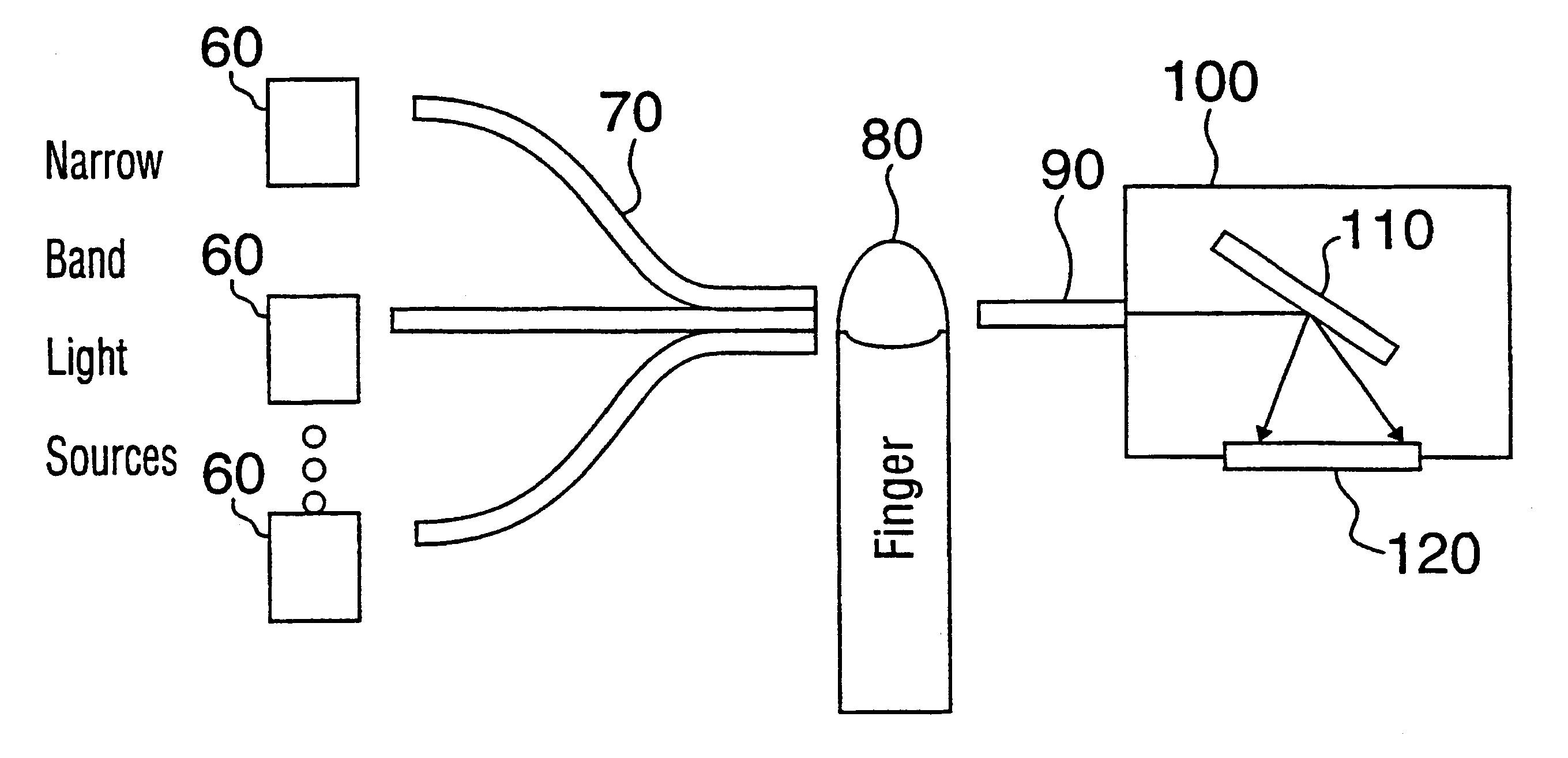Method for determination of analytes using NIR, adjacent visible spectrum and discrete NIR wavelenths
a technology of visible spectrum and analytes, applied in the field of method for determination of analytes using nir, can solve the problems of patient rash, potential danger and expensive operation, pain in the technique,
- Summary
- Abstract
- Description
- Claims
- Application Information
AI Technical Summary
Benefits of technology
Problems solved by technology
Method used
Image
Examples
example 1
Simulator
A simulator has been developed to aid in the analysis of analyte measurement alternatives. It simulated all components of a system according to the present invention, namely light sources, light transmission means, optics, filters and detectors. It also simulated light loss through a body part based upon measured spectra of an analyte of interest as well as a number of interfering substances. The simulator developed combinations of body constituents on a random basis and then developed spectra of each combination. Examples of combinations developed are for example, for first set glucose 5 mM, total Hb 14 g / dL and O.sub.2 Sat 95% etc.; sample No.2 glucose 7 mM; total Hb 13.5 g / dL and O.sub.2 Sat 98%. It then calculated absorption values based upon these spectra as well as the instrument and detector characteristics such as noise, drift, factors that effect spectra, etc. The absorption measurements were then processed by the same algorithms routinely used in an instrument to ...
example 2
Feasibility Model
A feasibility model, as illustrated in FIG. 5, was built wherein the light source (140) consisted of a 100 watt tungsten halogen lamp assembly (Oriel QTH #60067) regulated by an intensity controller (Oriel 68850) (130) followed by a collimator (Oriel #60076) (150) and a shutter (Oriel#71446) (160). Individual wavelengths in the 1150 to 1250 nm region as defined in the preferred embodiment set out above are created by passing the light through interference filters with bandwidths of approximately 10 nm (Orion). Sequential illumination is achieved by mounting these filters onto a filter wheel (McPherson #941) (170) which is rotated by a Device Controller(McPherson #747) (180). As will be appreciated by those skilled in the art, other means are available to achieve delivery of discrete wavelengths in this range.
To further block stray light the light beam was passed through another bandpass filter (190) with a transmission range of 1140 to 1260nm(Orion). Light is delive...
PUM
 Login to View More
Login to View More Abstract
Description
Claims
Application Information
 Login to View More
Login to View More - R&D
- Intellectual Property
- Life Sciences
- Materials
- Tech Scout
- Unparalleled Data Quality
- Higher Quality Content
- 60% Fewer Hallucinations
Browse by: Latest US Patents, China's latest patents, Technical Efficacy Thesaurus, Application Domain, Technology Topic, Popular Technical Reports.
© 2025 PatSnap. All rights reserved.Legal|Privacy policy|Modern Slavery Act Transparency Statement|Sitemap|About US| Contact US: help@patsnap.com



